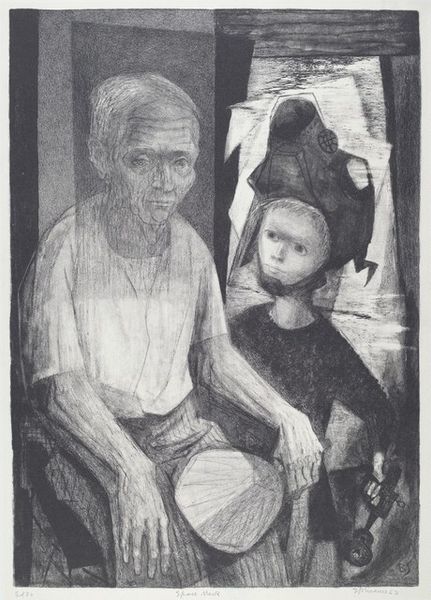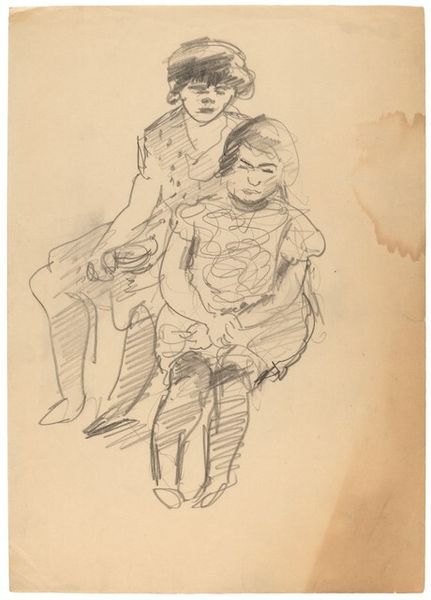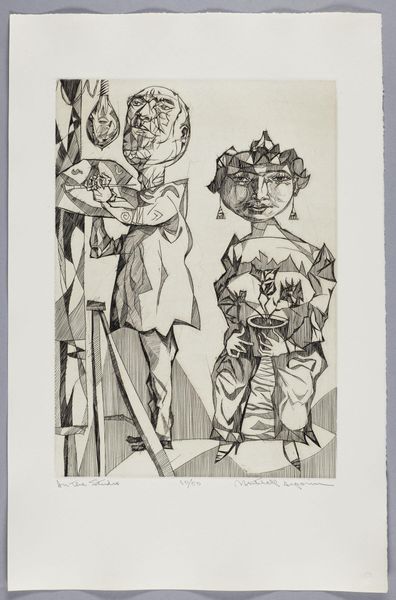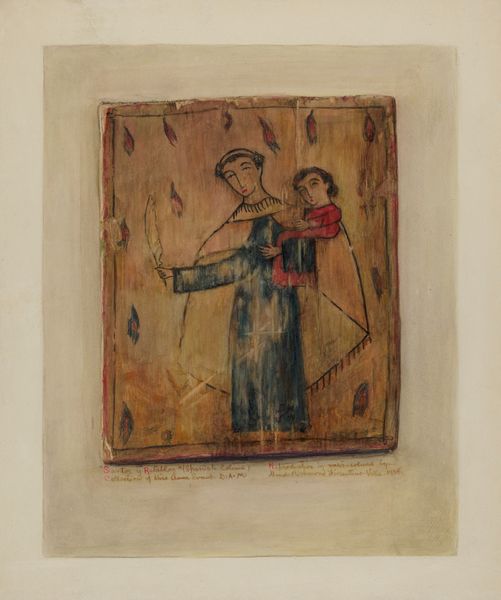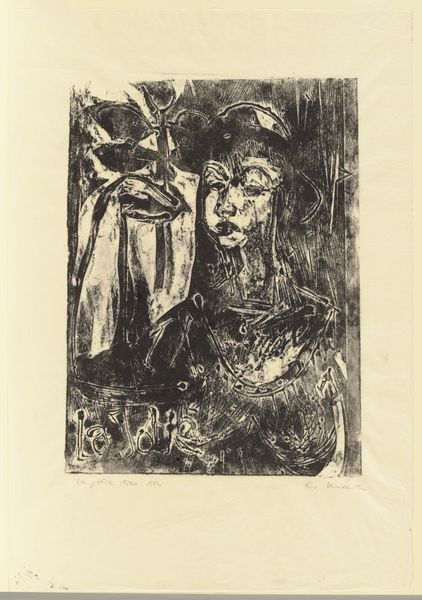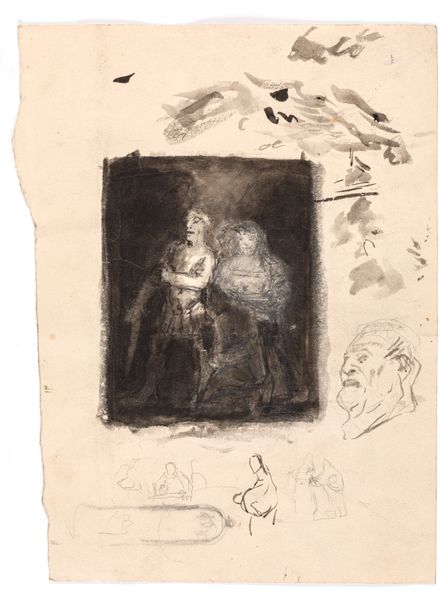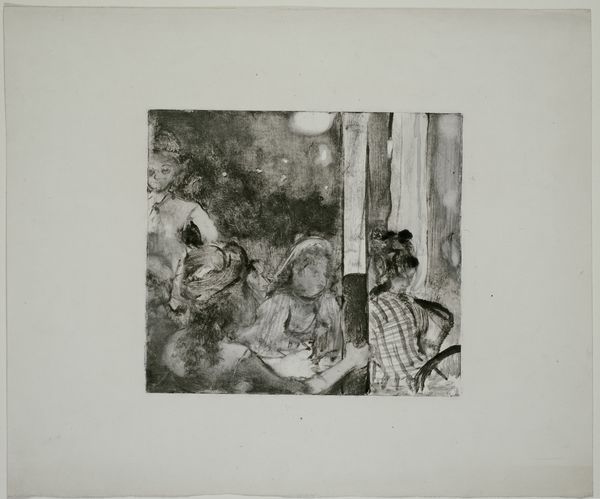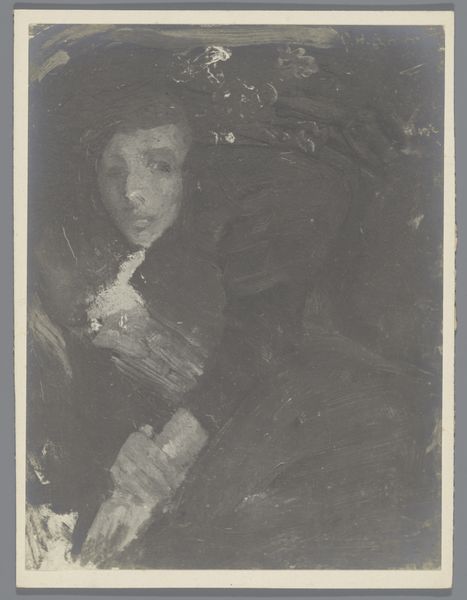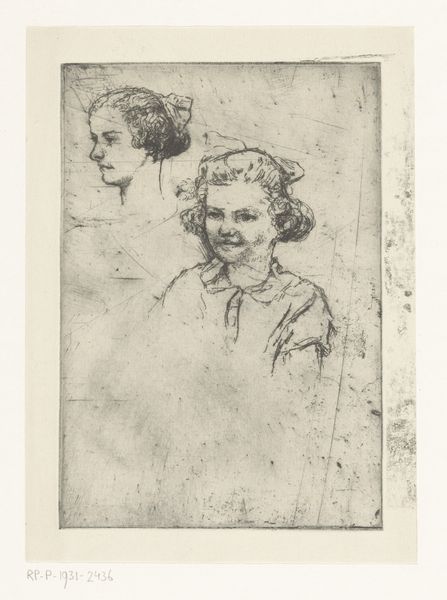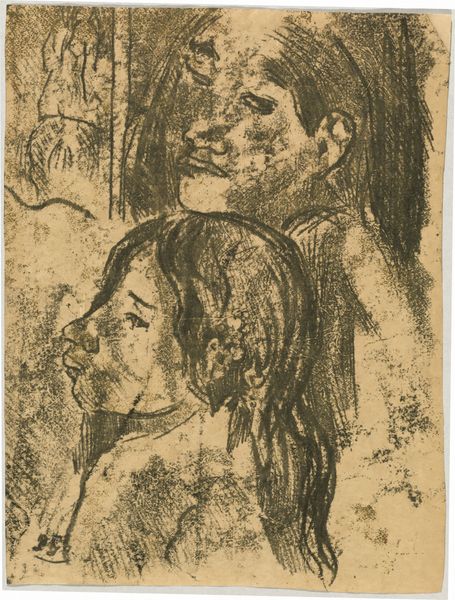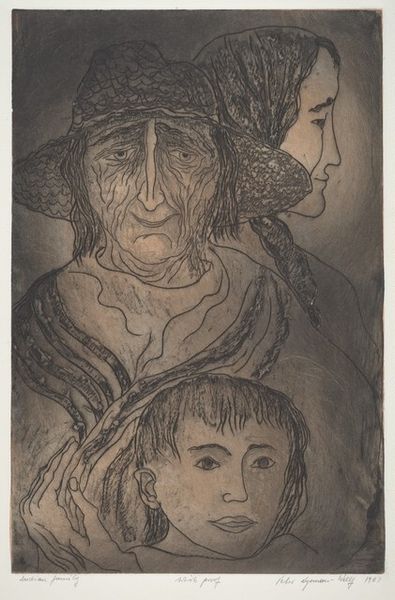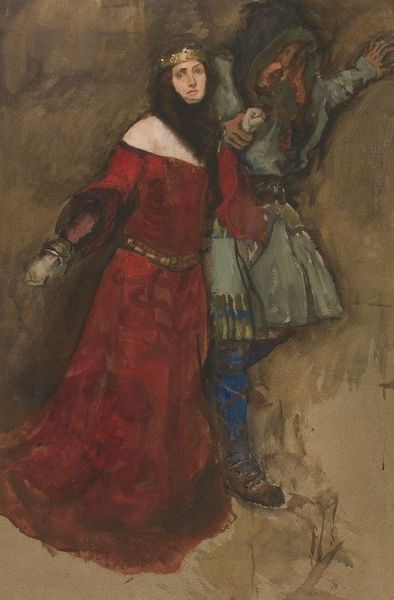
oil-paint
#
portrait
#
oil-paint
#
charcoal drawing
#
oil painting
#
expressionism
#
portrait drawing
#
portrait art
Copyright: Public domain
Curator: Here we have Walter Gramatté's "The Two Koppel Daughters," an oil on canvas created in 1918. Editor: Well, it hits you, doesn't it? The intensity. It's almost entirely monochrome – sepia tones wrestling with the shadows. And those faces! There's something terribly knowing in their eyes. Curator: Absolutely. Gramatté was deeply involved with Expressionism. Portraits for him weren't just likenesses; they were vessels of emotion and psychology. Notice the stark, almost angular features, and how he builds form with thick, urgent strokes. It is also hard to determine their class status since their features could resemble either the bourgeoise or the working class. Editor: Those expressive distortions! They remind me of ritual masks—these girls almost become archetypes. The one on the right cradles a doll—a common symbol of childhood—but there's something unsettling about how formally she presents it. It’s almost as if it represents her own lost innocence. It looks almost possessed! Curator: Symbolically rich for sure. The doll can signify many things: vulnerability, projection, even a desire to nurture, or even entrapment depending on the gaze held by the beholder. Considering the period – late World War One – maybe he aimed to capture the somber, fearful mood of the time. And while brown monochrome paintings generally suggest feelings of antiquity or something similar to it, this seems almost deliberately trying to project modernity. Editor: And they’re linked through this brown monochrome, forever tethered, which actually contributes to the anxiety it creates. The darkness of the artwork acts like its own reality, creating and sealing those memories with shadows of what they truly went through, as if painting that trauma into a bottle. Curator: An unsettling and fascinating portrait, revealing how portraits during periods of Expressionism aimed to capture both what is visually evident but emotionally buried within. Editor: Absolutely! There's a profound psychological depth here that lingers long after you’ve walked away.
Comments
No comments
Be the first to comment and join the conversation on the ultimate creative platform.
